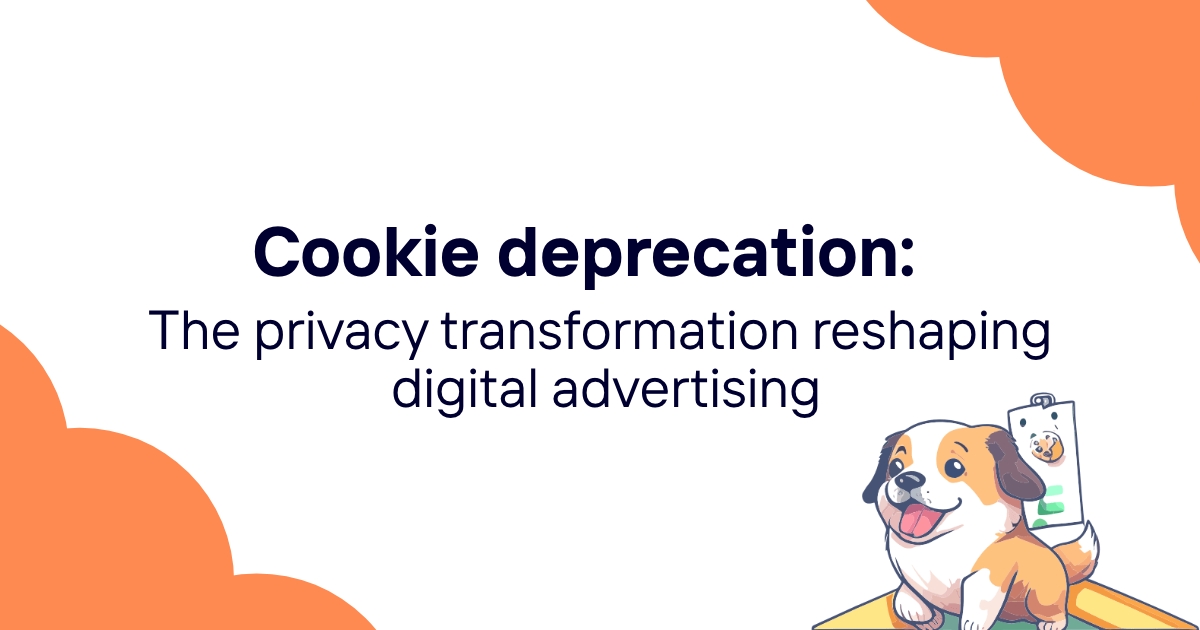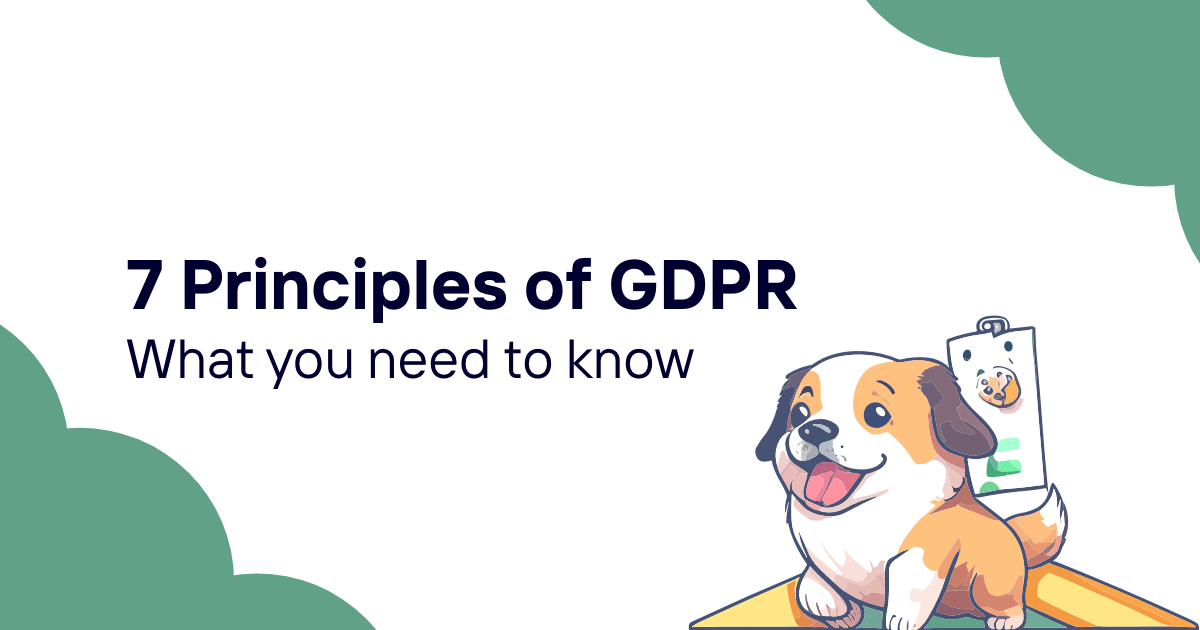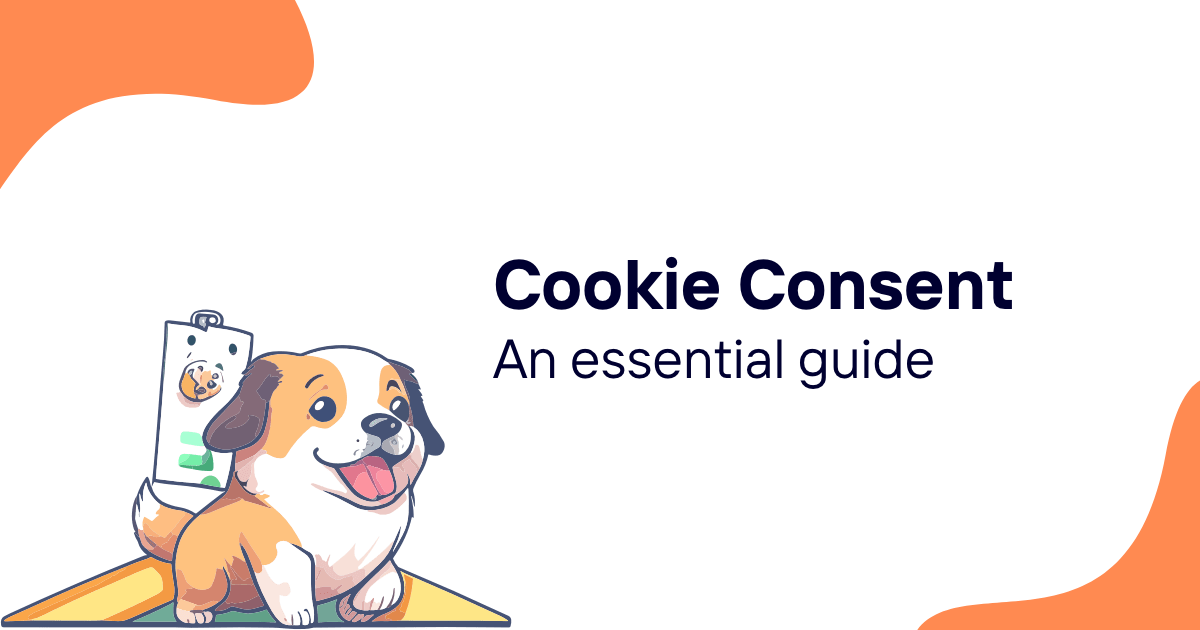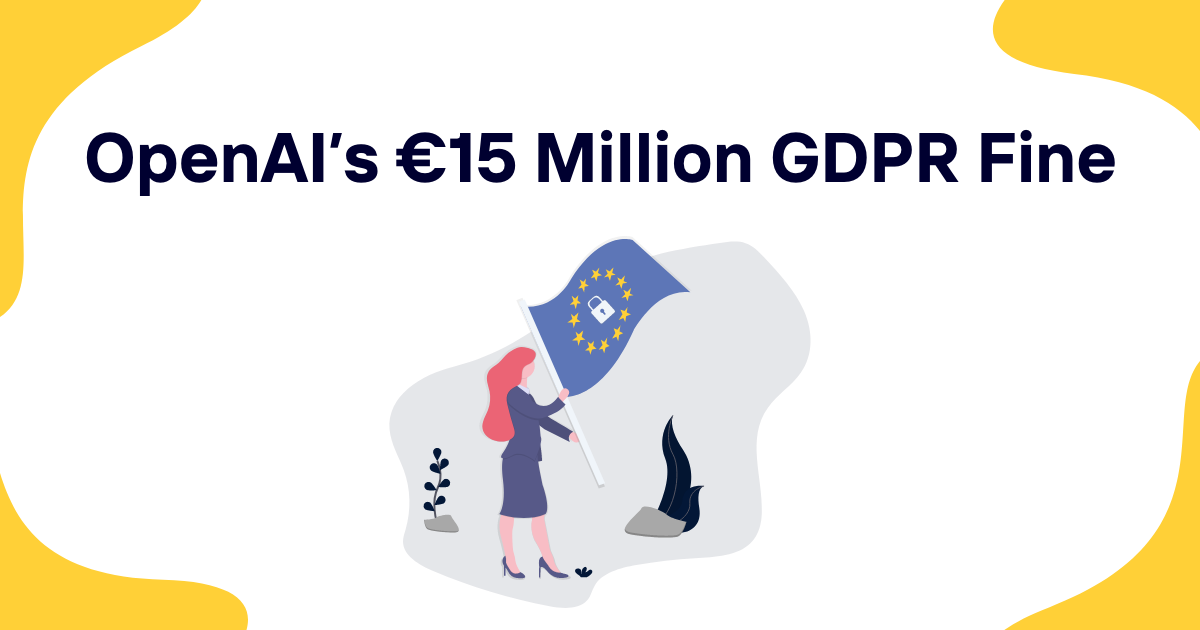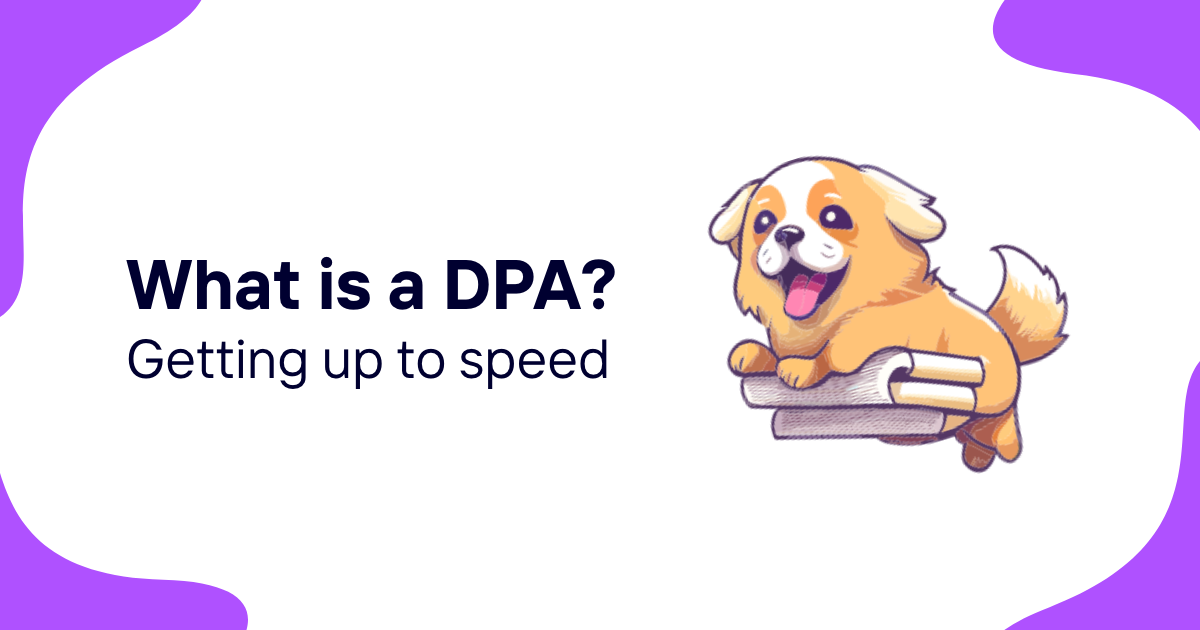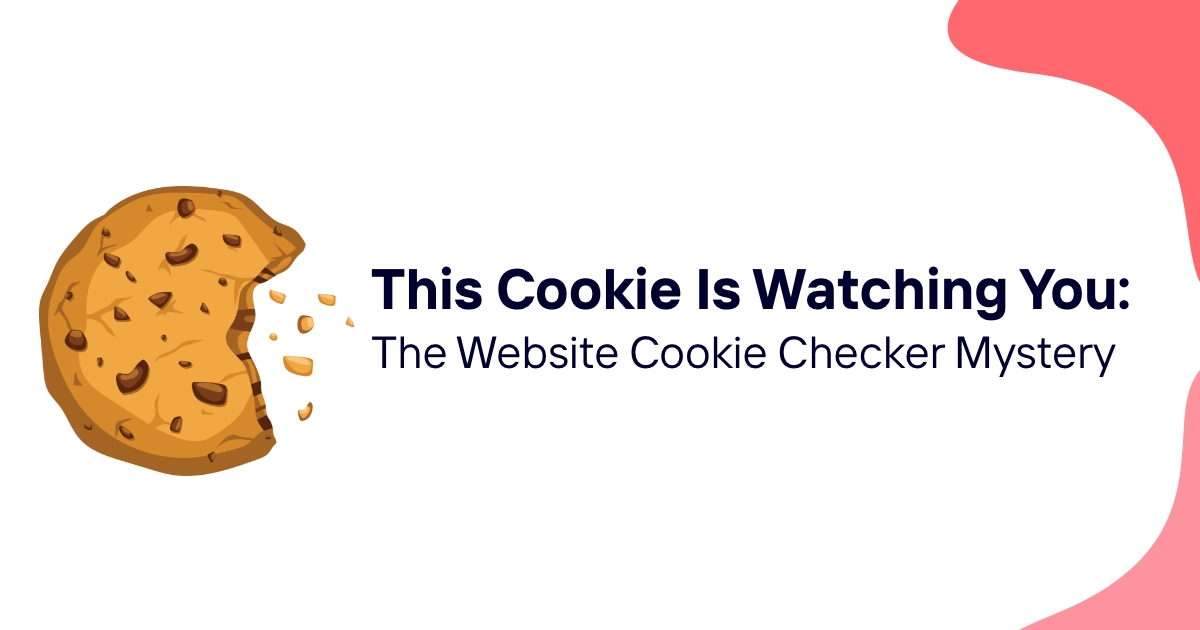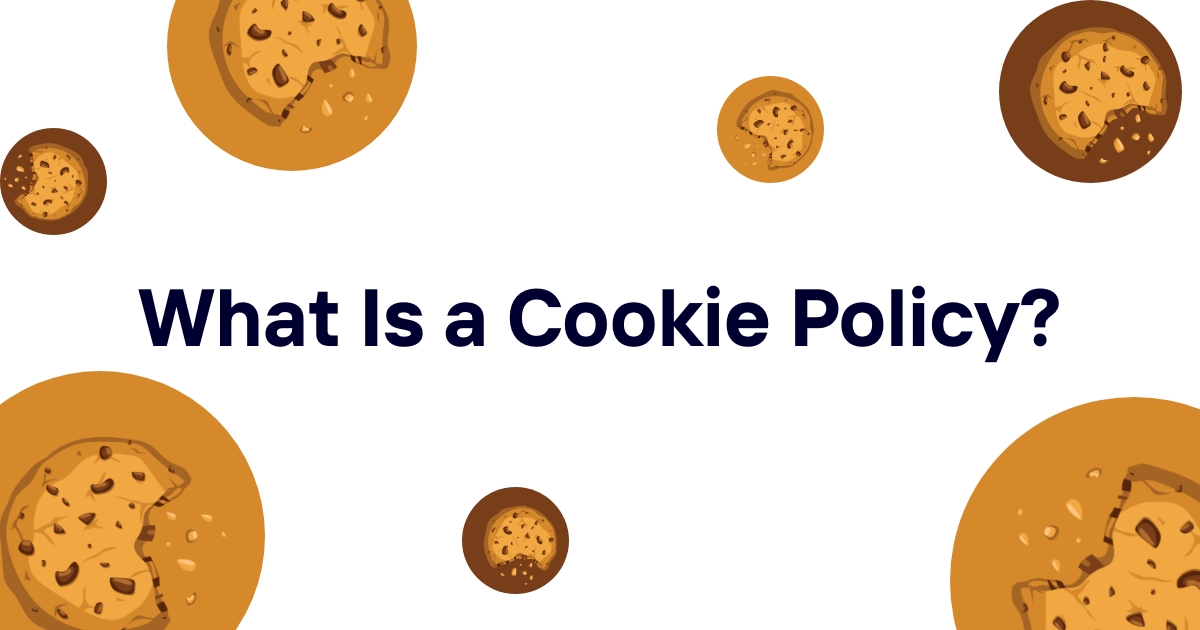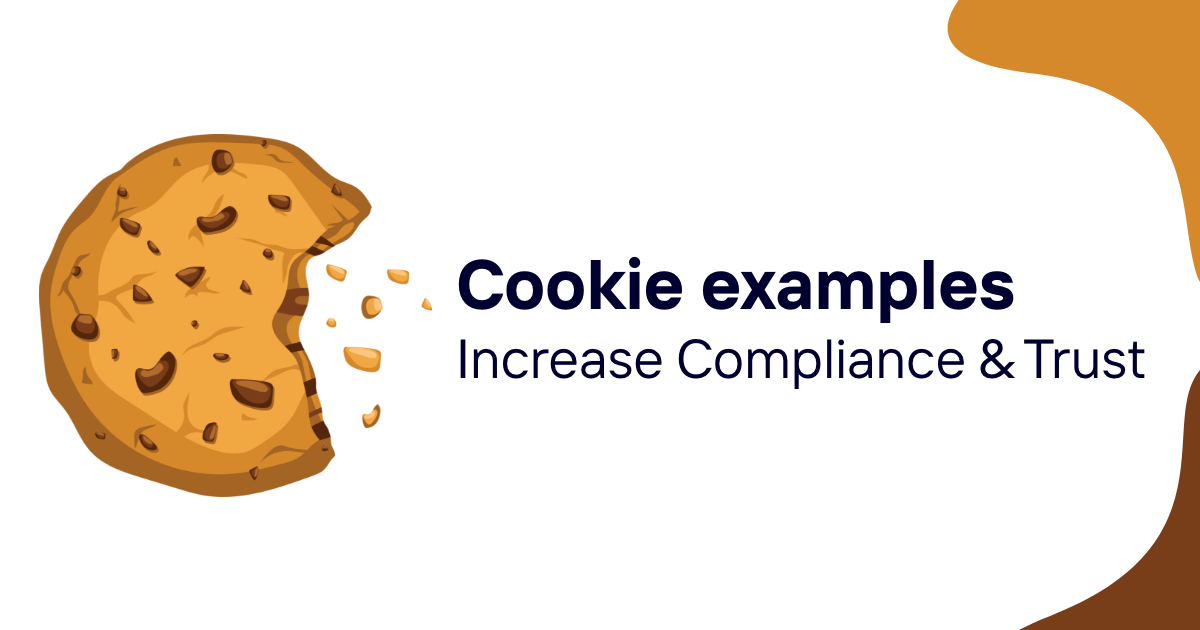Third-party cookies are fading into digital history, but Google's unexpected decision to pause the timeline has left many businesses wondering what comes next. The advertising industry had been racing toward a cookieless future, only to find the finish line moved once again.
Companies worldwide have spent years preparing for this shift. Marketing teams rewrote strategies, developers rebuilt tracking systems, and privacy officers updated policies. Then Google announced they wouldn't eliminate third-party cookies after all, choosing instead to let users decide their own privacy settings.
But here's the thing about digital transformation: momentum doesn't stop just because one company changes direction. Safari has already blocked third-party cookies by default. Firefox follows suit. Consumer privacy awareness continues growing. The cookieless future isn't canceled—it's just taking a different route.
Table of contents
- What cookie deprecation means for businesses
- The current state of cookie policies
- Google's policy reversal and its impact
- Why the advertising industry pushed back
- Privacy Sandbox: Google's alternative approach
- Alternative tracking methods gaining momentum
- First-party data strategies
- Contextual advertising returns
- Identity resolution solutions
- Server-side tracking implementations
- Consent management in the new era
- What businesses should do now
What cookie deprecation means for businesses
Cookie deprecation represents the systematic removal of third-party tracking cookies from web browsers. These small text files have powered digital advertising for decades, following users across websites and building detailed behavioral profiles.
Third-party cookies work differently from their first-party cousins. When someone visits your website, first-party cookies store information about that specific visit. Third-party cookies, however, are placed by external services like advertising networks, analytics platforms, or social media widgets. They track users across multiple websites, creating cross-site behavioral data.
The deprecation process affects business operations across multiple areas. Marketing teams lose granular audience targeting capabilities. Analytics become less precise. Personalization engines struggle without comprehensive user histories. Revenue attribution models break down without cross-domain tracking.
Consider an e-commerce company that relies on retargeting campaigns. Today, they can show ads to users who viewed specific products but didn't purchase. Without third-party cookies, identifying those users becomes significantly more challenging. The same applies to content publishers who depend on programmatic advertising revenue—their inventory becomes less valuable without detailed audience data.
Different browsers are taking varied approaches to this transition. Chrome originally planned complete elimination by early 2025. Safari implemented Intelligent Tracking Prevention, blocking most third-party cookies by default. Firefox offers Enhanced Tracking Protection with similar restrictions. Edge is gradually increasing privacy controls.
The current state of cookie policies
Browser manufacturers have been tightening cookie restrictions steadily over recent years. Apple led this charge with Safari's Intelligent Tracking Prevention, which launched in 2017 and has grown increasingly strict. The system uses machine learning to identify tracking behavior and blocks cookies from domains it classifies as trackers.
Mozilla's Firefox introduced Enhanced Tracking Protection as a standard feature, blocking third-party tracking cookies by default for all users. Microsoft Edge has implemented tracking prevention with multiple levels of protection. Even mobile browsers are becoming more restrictive, with both iOS and Android offering enhanced privacy controls.
These changes haven't happened in isolation. Privacy regulations like GDPR and CCPA have increased legal pressure on companies to minimize data collection. Consumer awareness about online tracking has grown significantly. Browser makers have positioned privacy as a competitive advantage, appealing to users who want more control over their digital footprint.
The result is a fragmented landscape where different browsers handle cookies differently. Some block third-party cookies entirely, others require user consent, and a few still allow unrestricted tracking. This creates challenges for businesses trying to maintain consistent user experiences and measurement capabilities across platforms.
Current statistics show that roughly 70% of consumers are actively blocking cookies through browser settings, extensions, or privacy-focused browsers. This number continues climbing as privacy awareness spreads and default browser settings become more restrictive.
Google's policy reversal and its impact
Google's announcement in July 2024 caught the industry off guard. After years of preparation and multiple delayed timelines, the company decided against eliminating third-party cookies from Chrome. Instead, they announced plans for a new user choice system that would let people control their tracking preferences.
This reversal didn't happen in a vacuum. Regulatory pressure played a significant role, particularly from the UK's Competition and Markets Authority (CMA) and Information Commissioner's Office (ICO). Both organizations raised concerns about Google's Privacy Sandbox potentially strengthening the company's market dominance.
The CMA worried that Privacy Sandbox would give Google unfair advantages over competitors. By controlling both the browser and major advertising platforms, Google could theoretically favor its own services while limiting others' access to user data. This could harm competition in digital advertising markets.
Industry testing of Privacy Sandbox APIs also revealed performance issues. Publishers reported significant revenue drops when relying solely on the new technologies. Criteo found that publishers could lose up to 60% of their Google Chrome revenue. Index Exchange reported 33% decreases in cost-per-thousand-impressions when using Privacy Sandbox instead of cookies.
The advertising industry itself pushed back hard against the timeline. The Interactive Advertising Bureau (IAB) Tech Lab conducted extensive analysis and concluded that Privacy Sandbox wasn't ready to replace third-party cookies effectively. They argued it would harm smaller publishers and advertisers while benefiting large platforms.
Google's response acknowledges these concerns while maintaining commitment to privacy improvements. The company continues developing Privacy Sandbox technologies and encourages adoption of privacy-friendly alternatives. But the immediate pressure to eliminate cookies has been removed.
This decision affects different stakeholders differently. Publishers get more time to develop alternative revenue strategies. Advertisers can continue relying on existing targeting methods while gradually adopting new approaches. Ad tech companies avoid sudden disruption to their business models. But privacy advocates worry that progress toward better user protection has stalled.
Why the advertising industry pushed back
The advertising industry's resistance to cookie deprecation stems from fundamental concerns about business continuity and market structure. Digital advertising generates hundreds of billions in annual revenue globally, with much of that dependent on cookie-based tracking and targeting.
Publishers face the most direct financial impact. Without precise audience targeting, advertising inventory becomes less valuable. Premium publishers with strong first-party data might weather this transition better, but smaller sites could see dramatic revenue decreases. Local news organizations, niche content creators, and emerging publications lack the resources to build sophisticated data collection systems.
Programmatic advertising platforms built their entire infrastructure around cookie-based bidding. Real-time ad auctions rely on detailed user profiles to determine bid prices. When that data disappears or becomes less accurate, the entire auction system becomes less efficient. Advertisers pay more for less precise targeting, while publishers receive lower revenues for their inventory.
Measurement and attribution present another major challenge. Marketing teams need to understand which campaigns drive sales, sign-ups, or other valuable actions. Cross-device tracking helps connect mobile browsing with desktop purchases. Without cookies, this attribution becomes much harder, making marketing budget allocation more difficult.
Small and medium businesses face particular hardships. Large companies can invest in first-party data collection systems, advanced analytics platforms, and alternative tracking technologies. Smaller businesses often lack these resources and depend on simple, cookie-based advertising tools that work out of the box.
The industry also worries about market concentration. If only the largest platforms can effectively operate without cookies, smaller competitors might be forced out of business. This could reduce competition in digital advertising, potentially leading to higher costs and fewer options for advertisers.
Testing of alternative technologies revealed significant performance gaps. Privacy Sandbox APIs showed promise but couldn't fully replace cookie functionality. Contextual advertising works well for some use cases but poorly for others. First-party data strategies require substantial investment and time to implement effectively.
Privacy Sandbox: Google's alternative approach
Google's Privacy Sandbox represents a comprehensive attempt to replace third-party cookies with privacy-preserving alternatives. The initiative includes multiple APIs designed to support different advertising use cases without exposing individual user data.
The Topics API groups users into interest categories based on their browsing history. Instead of tracking specific websites someone visits, it assigns broad topic labels like "fitness" or "cooking." Advertisers can target these topics without accessing detailed behavioral data. The system refreshes topics regularly and allows users to remove unwanted categories.
Protected Audience API (formerly FLEDGE) enables remarketing campaigns without cross-site tracking. When users visit a website, they can be added to interest groups stored locally in their browser. Later, advertisers can bid for these audiences without learning who the specific users are. The auction happens inside the browser, keeping data private.
Attribution Reporting API measures ad effectiveness without revealing individual user journeys. It provides aggregated data about which ads led to conversions while adding noise to prevent individual identification. This supports campaign measurement while protecting user privacy.
Trust Tokens help combat fraud without tracking users across sites. Websites can issue tokens to users who demonstrate legitimate behavior. Other sites can check these tokens to verify authenticity without learning the user's identity or browsing history.
Early testing results show mixed performance compared to cookie-based systems. Some use cases work well with Privacy Sandbox APIs, while others show significant functionality or performance gaps. Publishers report revenue decreases when relying solely on these technologies, though improvements continue as more companies adopt them.
The biggest challenge is ecosystem adoption. Privacy Sandbox only works effectively when publishers, advertisers, and ad tech platforms all implement the APIs. Partial adoption creates gaps in functionality and measurement. Getting thousands of companies to coordinate this transition requires significant time and effort.
Google continues investing heavily in Privacy Sandbox development and promotion. The company provides extensive documentation, testing tools, and support resources. But success depends on industry-wide adoption, which has been slower than originally hoped.
Alternative tracking methods gaining momentum
As third-party cookies become less reliable, businesses are investing in alternative tracking and targeting methods. These approaches vary in complexity, cost, and effectiveness, but all aim to maintain advertising functionality while respecting user privacy.
Contextual advertising has experienced a renaissance as cookies become less available. This approach targets ads based on webpage content rather than user behavior. A fitness article might display ads for workout equipment, while a cooking blog shows kitchen appliance promotions. The targeting relies on content analysis rather than user tracking.
Modern contextual advertising uses artificial intelligence to analyze page content, images, and even video to determine appropriate ad placements. This goes far beyond simple keyword matching, understanding context, sentiment, and user intent from the content itself.
Identity resolution platforms are gaining popularity as cookie alternatives. These services use deterministic data like email addresses, phone numbers, or logged-in account information to connect user interactions across devices and platforms. When users sign in consistently, companies can build comprehensive profiles without relying on cookies.
Data clean rooms provide secure environments for advertisers and publishers to analyze shared data without exposing sensitive information. Multiple parties can collaborate on audience insights and campaign measurement while maintaining data privacy. These platforms use advanced encryption and aggregation techniques to protect individual user information.
Universal ID solutions attempt to replace third-party cookies with industry-standard identifiers. Companies like The Trade Desk, LiveRamp, and ID5 offer alternative identification systems based on email addresses or other persistent identifiers. Success depends on widespread adoption across the advertising ecosystem.
Server-side tracking moves data collection from browsers to company-controlled servers. This approach bypasses some browser restrictions while providing more control over data processing. Companies can implement privacy controls directly rather than depending on browser policies.
Cohort-based targeting groups users into segments based on shared characteristics without tracking individuals. This allows audience targeting while protecting individual privacy. Google's former FLoC proposal used this approach, though it was later replaced by the Topics API.
First-party data strategies
First-party data has become the cornerstone of privacy-focused marketing strategies. This information comes directly from customer interactions with your business, making it both more reliable and less restricted by privacy regulations.
Companies are investing heavily in systems to collect, organize, and activate first-party data. Customer Data Platforms (CDPs) centralize information from multiple touchpoints including websites, mobile apps, email campaigns, and offline interactions. This creates comprehensive customer profiles without relying on external tracking.
Email marketing has gained renewed importance as a first-party data collection mechanism. Newsletter subscriptions, promotional offers, and transactional emails provide direct communication channels with customers. Progressive profiling techniques gradually collect additional information through email interactions without overwhelming users.
Loyalty programs and membership systems encourage customers to share information in exchange for benefits. Points programs, exclusive content, and personalized offers incentivize users to create accounts and provide preferences. This data becomes increasingly valuable as third-party alternatives disappear.
Progressive web apps and mobile applications offer controlled environments for data collection. When users download and engage with company-owned apps, businesses can track behavior within that environment while respecting broader privacy controls.
Survey and feedback systems provide zero-party data where customers explicitly share preferences, interests, and opinions. This information is often more accurate than inferred behavioral data because users intentionally provide it.
The challenge with first-party data is scale and reach. Companies can only collect information about their own customers, limiting audience expansion capabilities. Building comprehensive datasets requires time, investment, and ongoing customer engagement.
Data quality becomes critical when relying on first-party information. Incomplete profiles, outdated information, and inconsistent data entry can undermine marketing effectiveness. Companies need robust data management practices to maintain accurate customer records.
Contextual advertising returns
Contextual advertising predates behavioral tracking by decades, but modern technology has transformed its capabilities and effectiveness. Today's contextual systems use artificial intelligence and natural language processing to understand content far more sophisticated than simple keyword matching.
Advanced contextual platforms analyze webpage content, images, video, and even audio to determine appropriate ad placements. They understand sentiment, topic categories, brand safety considerations, and user intent from content analysis alone. This creates targeting opportunities that rival behavioral approaches in many situations.
The privacy advantages of contextual advertising are significant. No user tracking occurs, eliminating privacy concerns and regulatory compliance issues. Users see relevant ads based on their current interests without feeling surveilled or followed across the web.
Performance data suggests contextual advertising can be highly effective when implemented properly. Users browsing fitness content are genuinely interested in health and wellness products. Someone reading cooking articles likely wants kitchen equipment or recipe ingredients. The relevance is immediate and contextual rather than based on historical behavior.
Brand safety benefits also appeal to advertisers concerned about ad placement. Contextual systems can analyze content for inappropriate material, controversial topics, or brand misalignment. This provides more control over advertising environments compared to behavioral targeting based on user profiles alone.
Challenges remain with contextual approaches. Some products and services don't align well with specific content categories. Financial services, insurance, and business software might struggle to find relevant contextual placements. Seasonal campaigns and time-sensitive promotions also present difficulties.
Cross-device consistency becomes harder without user tracking. Someone researching products on mobile might make purchases on desktop, but contextual systems can't connect these behaviors. This limits attribution and campaign optimization capabilities.
The cost structure of contextual advertising differs from behavioral targeting. Content analysis requires computational resources and sophisticated technology platforms. But it eliminates many privacy compliance costs and reduces regulatory risks.
Identity resolution solutions
Identity resolution platforms attempt to create unified customer views without relying on third-party cookies. These systems use deterministic data points like email addresses, phone numbers, and logged-in account information to connect user interactions across devices and platforms.
The most effective identity resolution relies on customer login behavior. When users consistently sign into websites and applications, companies can build comprehensive activity profiles. Social media platforms, streaming services, and e-commerce sites with strong login rates have advantages in this area.
Probabilistic matching uses statistical analysis to connect devices and sessions that likely belong to the same user. These systems analyze IP addresses, device characteristics, browsing patterns, and timing to make educated guesses about user identity. While less accurate than deterministic matching, probabilistic approaches can fill gaps when direct identifiers aren't available.
Hashed email addresses provide privacy-preserving identification that works across different platforms. Companies can compare encrypted email lists without exposing actual addresses, enabling audience matching and suppression lists. This approach requires users to provide email addresses consistently across platforms.
Mobile advertising IDs like Apple's IDFA and Google's Android Advertising ID serve as alternatives to web cookies. These identifiers work within mobile app environments and can connect to web activity when users log into consistent accounts. But mobile platforms are also restricting these identifiers, with Apple requiring explicit user consent.
Universal ID initiatives aim to create industry-standard alternatives to third-party cookies. The Trade Desk's Unified ID 2.0, LiveRamp's IdentityLink, and similar solutions provide shared identification systems based on user-provided email addresses or other consented identifiers.
Success with identity resolution requires careful attention to privacy regulations and user consent. GDPR, CCPA, and similar laws regulate how companies collect, process, and share identifying information. Transparent privacy policies and clear consent mechanisms are essential for legal compliance.
The fragmented nature of identity resolution presents challenges. Different platforms use different systems, creating gaps in cross-platform measurement and targeting. Industry standardization efforts continue, but universal adoption remains elusive.
Server-side tracking implementations
Server-side tracking moves data collection and processing from client browsers to company-controlled servers. This approach provides more control over data handling while bypassing some browser restrictions on client-side tracking.
Google Tag Manager Server-Side exemplifies this approach, allowing companies to process analytics and advertising data on their own infrastructure. Instead of sending information directly from browsers to third-party services, data flows through company servers where it can be filtered, modified, or enriched before transmission.
Privacy benefits include better control over what data gets shared with external services. Companies can implement data minimization practices, removing unnecessary information before sending it to analytics or advertising platforms. This reduces privacy risks and helps with regulatory compliance.
Performance improvements are possible when server-side processing reduces the number of client-side scripts. Fewer browser tags can improve website loading speeds and user experience. Complex data processing moves to servers with more computational resources than mobile devices or older computers.
The technical complexity of server-side implementation is significant. Companies need server infrastructure, development resources, and ongoing maintenance capabilities. Cloud platforms like Google Cloud, Amazon Web Services, and Microsoft Azure provide tools to simplify deployment, but technical expertise remains required.
Data accuracy can improve with server-side processing because it's less susceptible to ad blockers, browser restrictions, and client-side errors. Companies maintain more control over data collection and can implement backup systems for critical tracking functions.
Consent management integration becomes more sophisticated with server-side systems. Companies can implement granular privacy controls, honoring user preferences before data reaches external services. This provides better GDPR and CCPA compliance capabilities.
Cost considerations include server infrastructure, development time, and ongoing maintenance. While server-side tracking can reduce some third-party service costs, it requires investment in technical capabilities and infrastructure management.
Consent management in the new era
Cookie consent has evolved from simple acceptance banners to sophisticated preference management systems. Modern consent platforms need to handle granular choices, respect user decisions, and integrate with multiple tracking and advertising technologies.
The regulatory landscape demands more than basic cookie acceptance. GDPR requires explicit consent for non-essential cookies, with users able to withdraw consent easily. CCPA provides opt-out rights for personal information sales. These laws create complex requirements for consent collection and management.
Consent Mode technologies like Google's Consent Mode V2 allow websites to adjust tracking behavior based on user choices. When users decline certain cookies, the systems can still provide aggregated measurement while respecting individual privacy preferences. This balances user control with business needs for campaign measurement.
Granular consent options give users control over specific cookie categories. Instead of all-or-nothing choices, modern systems let people accept functional cookies while declining advertising or analytics cookies. This provides better user experience and often results in higher consent rates.
International variations in privacy law create additional complexity. European users encounter strict GDPR requirements, California residents get CCPA protections, and other regions have different standards. Global businesses need consent systems that adapt to local regulations automatically.
Consent fatigue affects user behavior as privacy banners become ubiquitous. Well-designed consent interfaces balance legal requirements with user experience, avoiding overwhelming choices while providing meaningful control. Clear language, intuitive interfaces, and reasonable defaults improve user engagement.
Technical integration challenges arise when consent decisions need to reach multiple advertising and analytics services. Real-time communication between consent platforms and tracking technologies ensures user choices are respected across all systems. APIs and standardized protocols facilitate these integrations.
Ongoing consent management includes preference centers where users can review and modify their choices. Transparency reports show how personal data gets used. Regular consent renewal ensures preferences remain current. These features build user trust and demonstrate genuine commitment to privacy.
What businesses should do now
Despite Google's timeline changes, businesses should continue preparing for a cookieless future. Other browsers are already restricting third-party cookies, consumer privacy awareness keeps growing, and regulatory pressure continues increasing. The question isn't if cookies will become less effective, but when.
Audit current data collection practices to understand dependencies on third-party cookies. Many companies don't realize how extensively their marketing, analytics, and personalization systems rely on cross-site tracking. This assessment identifies priorities for alternative implementations.
Invest in first-party data collection systems that provide value to customers in exchange for information. Loyalty programs, content subscriptions, and personalized experiences encourage users to share data willingly. Focus on building direct relationships rather than relying on third-party tracking.
Test Privacy Sandbox APIs and other cookie alternatives in controlled environments. While these technologies aren't perfect, early adoption provides learning opportunities and competitive advantages. Companies that understand new tracking methods before they become standard will adapt more easily.
Implement contextual advertising campaigns to reduce dependence on behavioral targeting. Many businesses discover that contextual approaches work well for their products and audiences. This diversification reduces risk while potentially improving brand safety and user experience.
Develop server-side tracking capabilities for critical measurement and personalization functions. This investment provides more control over data handling while improving accuracy and privacy compliance. Start with high-priority use cases before expanding to comprehensive implementation.
Review and upgrade consent management systems to handle granular user choices. Modern privacy regulations require more sophisticated consent handling than basic cookie banners. Investment in proper consent technology reduces legal risks while improving user trust.
Build partnerships with identity resolution providers and data clean room platforms. These collaborations can maintain audience reach and campaign measurement capabilities as cookies become less available. Evaluate different options to find the best fit for specific business needs.
The cookieless future presents challenges, but it also creates opportunities for businesses that adapt proactively. Companies that invest in privacy-friendly alternatives now will be better positioned when cookies become less effective. Those that wait might find themselves scrambling to maintain marketing effectiveness while competitors have already adapted.
Privacy-focused marketing isn't just about regulatory compliance—it's about building sustainable business practices that respect customer preferences while achieving marketing goals. The companies that succeed will be those that view privacy as an opportunity rather than a constraint.
Modern compliance platforms like ComplyDog help businesses navigate these transitions by providing comprehensive GDPR compliance tools that work alongside evolving privacy technologies. As cookie deprecation reshapes digital marketing, having robust data protection systems becomes more critical than ever for maintaining customer trust and regulatory compliance.
